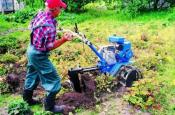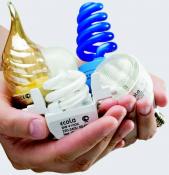Search
Login
Drainage pumps used in private homes, types of pumps, how to choose the right drainage pump
A country house delivers a lot of positive emotions and various memories. Meanwhile, it brings various troubles.
In the spring, floods and snowmelt, summer and autumn heavy rains. All this can lead to flooding of cellars, basements and drainage wells. The presence of a drainage pump on the farm will help reduce the negative effects of such nature tricks.
A drainage pump can be used to drain a pond or pool, organize a fountain and an alpine hill, when watering a garden and a garden. The thing is useful and very often irreplaceable. But how to choose this equipment?
Table of contents
- Features of the use of drainage pumps video
- Criteria for choosing a drainage pump video video
- Protection mechanisms for submersible drainage pumps
Features of the use of drainage pumps
Submersible drainage pumps are used in industry and in private households. They are durable, not whimsical to use. The simplest household options can work at a depth of 5 meters. Moreover:
- mobile
- have low weight (4-8kg);
- easy to maintain;
- not demanding to the operating conditions (particle size up to 20mm);
- work in automatic mode;
- equipped with energy-saving engines;
- protected against dry running;
- have long lines of operation without maintenance.
Criteria for choosing a drainage pump
Choosing and buying a drainage pump may be accompanied by some difficulties due to the large assortment of models from different manufacturers. The highest quality products on the drainage pump market come from Italy and Germany. Manufacturers of these countries sell different lines of equipment for various operating conditions.
The pump consists of several main parts:
- housing;
- electric motor;
- automatic on / off system.

We highlight the main technical and operational characteristics of the pump:
By appointment, the pumps are divided into:
Surface are intended for pumping water from small tanks, shallow depths.


Submersible are designed to clean deep reservoirs, quickly localize flooding. Immersion depth is indicated by the equipment manufacturer and is 5-10m.


There are also two types of pumps that can pump water of varying degrees of pollution:
- Lightly contaminated particle size up to 10mm;
- Coarse particles up to 60 mm in size.
Performance amount of water transferred per unit of time. For household pumps, this parameter is 5-50m3 / hour, for industrial models, the pump capacity will be 100-700m3 / hour, depending on the model.
Pressure maximum height of raising water. The minimum lift height for domestic pumps is 5 meters. Some industrial models can lift liquid up to a height of 20m. With the horizontal movement of water, this parameter can conditionally be multiplied by 7-10 times and amount to 50-150m.
Mode of operation. The parameter indicates whether the given model can work continuously or whether technical stops are necessary during pump operation.
Water temperature for most pumps, the maximum water temperature should be no more than 45 ° C, for a short time (up to 3 minutes) it can be turned on for pumping water with a temperature of up to 90 ° C. For industrial models of drainage pumps, the temperature of the working water can be increased to 70C.
Pump Material. It is important to choose a pump whose housing and working elements are made of high-quality stainless steel. Most Grundfos drainage pump models are made this way.
Emptying level minimum height of water in the tank at which the pump will shut off. It can range from a few centimeters to several millimeters. For example, Wilo drainage pumps leave a water level of only 2 mm high.
engine's type. Pumps are equipped with single-phase, or three-phase motors. When connecting a three-phase motor, it is important to observe the alternation of phases. To do this, place the pump on a flat surface and turn it on for a short time. If the pump shaft rotates clockwise, the pump is connected correctly. If the shaft rotates in the opposite direction, it is necessary to change the phase order.
Outlet Diameter indicates unit throughput is 10 inches.
Protection mechanisms for submersible drainage pumps
To protect the electric motor of the drainage pump from dry running, it is equipped with a thermal relay that will turn off the pump when the motor overheats. But in order to prevent overheating of the unit, additional systems are used to control the height of the water level in the tank.
Float mechanism switches the pump on / off automatically when the water level in the tank decreases / increases. Ease of use and reliable performance have made it popular among pump manufacturers. It acts as a level sensor and an actuator for turning on / off the pump.

Aquasensor new development in the market of drainage pumps. It has two independent sensors that adjust the water level when the pump is turned on / off. Mostly used in narrow tanks where the drainage pump cannot operate with a float switch.






